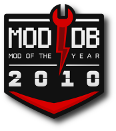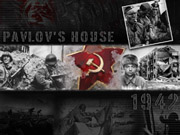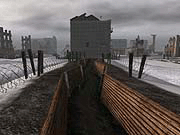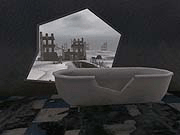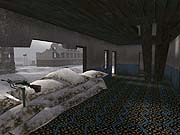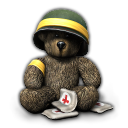 |
||
|
|
||
 |
||
|
May 8th/9th 194508.05.2005 22:16 GMT Hello and welcome back folks for another update of the Forgotten Hope Mod. Tonight is a historic night as we celebrate the 60th anniversary of VE-Day (Victory-in-Europe Day). The German Chief-of-Staff, General Jodl, signed Germany's unconditional surrender to the western Allies and Russia yesterday 60 years ago at 2:41am and the operations were to cease at 1 minute after midnight (GMT) on the following day. In deference to the Russians, the surrender ceremony to the western allies at Rheims of the previous day is repeated before Marshall Zhukov and other Soviet generals at Karlshorst, a suburb of Berlin. But as the ceremony took a little longer than expected, it was already 00:16am, May 9th, local German time, when the second surrender was signed, which was 2:16am on May 9th in Moscow. For that reason VE-Day is celebrated on the 7th of May in the US as the western Allied forces took custody of German forces in the West by that date, on the 8th in Germany as this is when the main fighting finally stopped by local time, and the 9th in Russia, according to the time standard being used by the Red Army. For our news update we would like to introduce something new for the Russian forces today. The first object to show off today is the PPS-43 (Pistolet-Pulemet Sudaeva, or model 1943 Sudaev SMG) modeled and skinned by McGibs. It was developed as a more compact and mobile weapon than the PPSH-41, which was considered too big and too heavy to be used by tank crews, mobile recon groups and paratroopers. Aleksei Ivanovich Sudaev initially designed a new SMG in 1942 and the final model was designated the PPS-43. Sometimes is referred as the best SMG of World War 2, the PPS 43 was exported to pro-Soviet regimes around the world and widely copied after the war. Technically, the PPS-43 is a fully automatic weapon fired in full auto only. The sight is an L-shaped flip type and is marked for 100 and 200 meters distance. The SMG uses PPSH-41-type box magazines (35 rounds) and has a rate of fire of 700rpm. All in all it is a remarkable weapon to play around with. Furthermore we would like to showcase a new map. The first map completely created by Lobo on his own, it features Stuka's Stalingrad building textures and was made in deference to Sergeant Pavlov and his platoon, who defended one house in Stalingrad against heavy attack for an extended period. The house was a four-story building in the city center, built parallel to the embankment of the river Volga and overseeing a large open space, the "9th January Square". That house, known to history as "Pavlovís house", became a symbol of the great determination of the Soviets to hold the city no matter what the cost. Completely surrounded by Germans, Pavlovís soldiers held the constantly attacked building until relief came. They were successful, although only four men survived the combat. Together they went on defending the building on their own. After several days, reinforcements finally arrived, equipping the defenders with machine-guns, anti-tank rifles and mortars. The men, now a garrison of twenty-five, surrounded the building with barbed wire and minefields, and established anti-tank and machine-gun posts at the windows. For better internal communications and supplies they breached the walls in the basement and upper floors, and dug a communications trench to Soviet positions outside. Supplies were brought in via the trench and by boats crossing the river, defying German air raids and shelling. Intensive fighting lasted from 23 September until 25 November 1942! That's all for today folks. We hope you enjoyed the update and would like to invite you to visit our public forums to discuss this one or just to remember the victims of the fighting during World War II. |
|
||||
 |
||||||



















